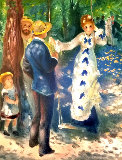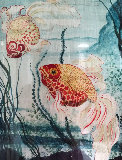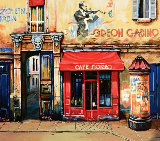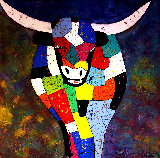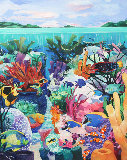


Royal Woman 1982
Paul Gauguin
Limited Edition Print : Woodcut on Hand Paper 420x300 mm
Size : 6.3x10.94 in | 16x28 cm
Edition : Not Numbered
Reduced
- 🔥Woodcut - Blue Chip $3,200
OtherBlind Stamp Kpvu
Condition Mint
Not Framed
Purchased fromPrivate Collector 2002
Story / Additional InfoÅ tefánik was a private collector and notable traveller. In his first trip to Oceania to the island Tahiti, he got very well informed by us about the tragic history of Paul Gauguin. Gauguin stayed on Tahiti and made there his most typical artworks and ended his restless, passionate and adventurous life on the Island Domingo. Å tefánik searched for traces of Gauguin’s artworks. Å tefánik left in 1910 to Tahiti, where about 20 years ago Paul Gauguin lived. After a further acquaintance and friendly contact with the Islanders Å tefánik succeeded to find the wooden shells with relief woodcarvings by Gauguin. After Å tefániks return to Czech Republic, TavÃk FrantiÅ¡ek Å imon succeeded to make prints with ink on Japanese paper. Å imon printed this series in Prague around 1930. Nowadays the blocks of Gauguin are in the collection of the National Gallery in Prague. Thanks to National Gallery the woodcuts were printed in 1982 by Klub přátel výtvarného umÄ›nà (KPVU) for its members.
Certificate of AuthenticityArt Brokerage
LID152746
Paul Gauguin - France
Art Brokerage: Paul Gauguin French Artist: Paul Gauguin was a financially successful stockbroker and self-taught amateur artist when he began collecting works by the impressionists in the 1870s. Inspired by their example, he took up the study of painting under Camille Pissarro. Pissarro and Edgar Degas arranged for him to show his early painting efforts in the fourth impressionist exhibition in 1879 (as well as the annual impressionist exhibitions held through 1882). In 1882, after a stock market crash and recession rendered him unemployed and broke, Gauguin decided to abandon the business world to pursue life as an artist full-time. In 1886, Gauguin went to Pont-Aven in Brittany, a rugged land of fervently religious people far from the urban sophistication of Paris. There he forged a new style. He was at the center of a group of avant-garde artists who dedicated themselves to synthétisme, ordering and simplifying sensory data to its fundamentals. Gauguin's greatest innovation was his use of color, which he employed not for its ability to mimic nature but for its emotive qualities. Over the next several years he traveled often between Paris and Brittany, spending time also in Panama and Martinique. In 1891 his rejection of European urban values led him to Tahiti, where he expected to find an unspoiled culture, exotic and sensual. Instead, he was confronted with a world already transformed by western missionaries and colonial rule. In large measure, Gauguin had to invent the world he sought, not only in paintings but with woodcarvings, graphics, and written works. Listings wanted.


















